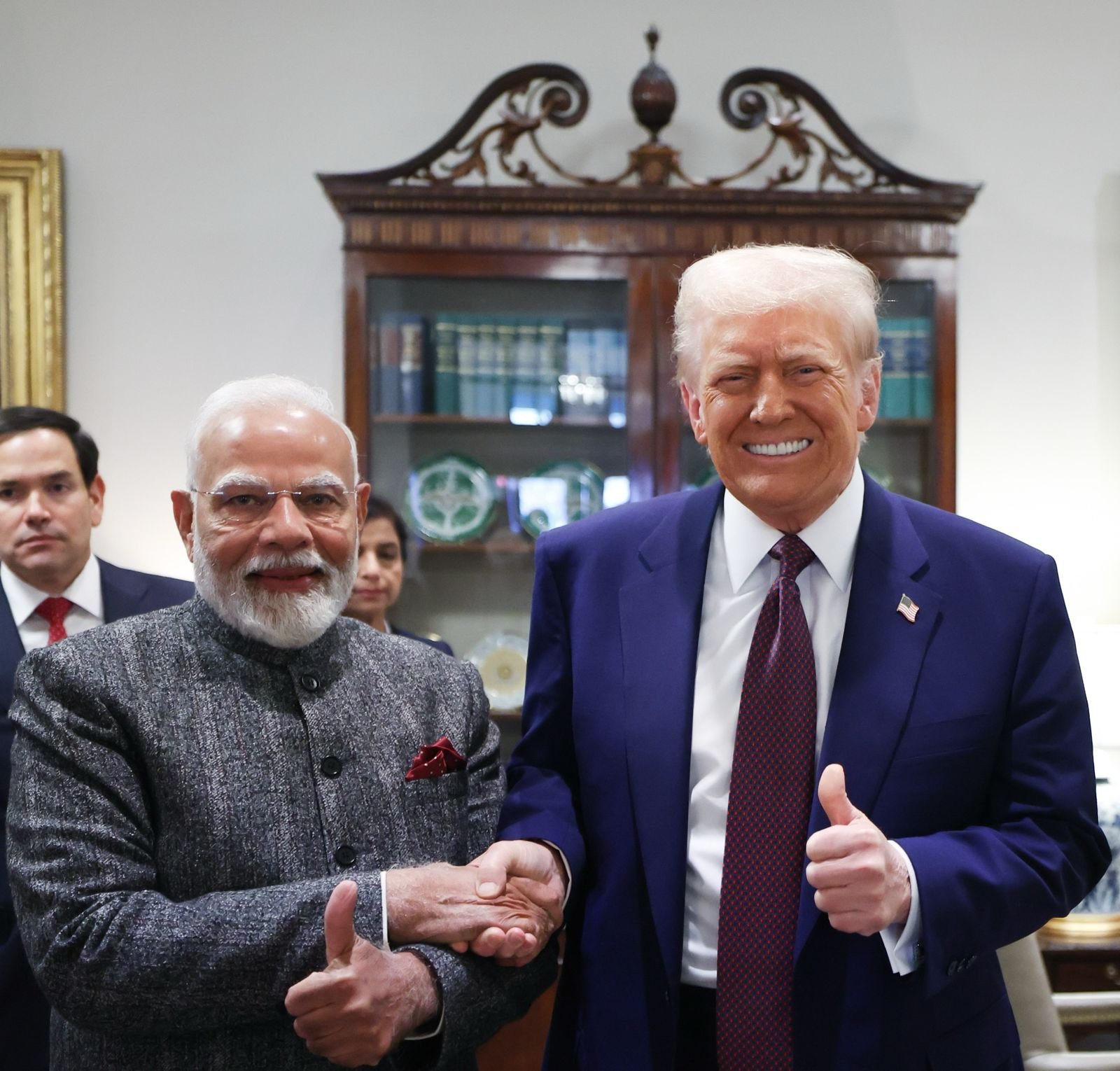U.S. Appeals Court Strikes Down Trump’s Global Tariffs; India Among Hardest-Hit Exporters as Supreme Court Showdown Nears
A federal appeals court has ruled that most U.S. President Donald Trump’s global tariffs are unlawful, striking at the foundation of his trade policy and opening the path for a high-stakes Supreme Court review.
The U.S. Court of Appeals for the Federal Circuit concluded that the International Emergency Economic Powers Act (IEEPA), the statute Trump used to justify his reciprocal tariffs, does not give presidents the authority to impose unilateral, country-specific duties on such a sweeping scale.
 |
| Image Source: PM NaMo |
At the centre of the dispute are Trump’s executive orders, beginning with Executive Order 14257 (April 2025), which declared U.S. trade deficits a “national emergency” and imposed reciprocal tariffs on dozens of countries.
A follow-up order issued on July 31, 2025 expanded the list and adjusted rates, with Annex I setting out penalties such as 25% tariffs on Indian goods, 15% on Japan, and variable rates on the European Union.
Separately, Washington imposed an additional 25% duty on India’s imports of discounted Russian crude and refined products, bringing India’s total tariff exposure to 50% -- among the steepest levied on any U.S. trading partner.
Trump’s administration argued that IEEPA and the National Emergencies Act allowed the president to act unilaterally to correct what he described as unfair trade imbalances that threatened America’s economic and national security.
The appeals court rejected that argument, echoing an earlier trade court ruling that IEEPA was never intended to authorize tariff regimes of this magnitude.
The stakes now rest with the Supreme Court. If the justices uphold the lower courts, Trump’s reciprocal tariff framework will collapse, rolling back duties to pre-2025 schedules.
That would provide relief to U.S. trading partners, including India, which sends roughly $86.5 billion worth of exports annually to the U.S., of which nearly two-thirds is covered by the new tariff regime. Sectors such as textiles, jewellery, and leather goods have been hit especially hard.
If the Court sides with Trump, the reciprocal tariff model will remain in place, establishing a precedent that future administrations could invoke to impose sweeping duties without congressional approval.
This would effectively make tariffs a standing tool of U.S. foreign policy and could reshape global trade flows for years to come.
For India, the ruling carries far-reaching implications. The U.S. is its largest single export market, and the 50% tariff burden risks eroding competitiveness in labour-intensive industries while raising costs in its energy sector.
New Delhi has responded by accelerating diversification: striking long-term investment agreements with Japan, strengthening BRICS economic mechanisms, and seeking to push forward trade negotiations with the European Union.
Prime Minister Narendra Modi’s recent summit with Japanese Prime Minister Shigeru Ishiba -- which delivered a ¥10 trillion investment roadmap and expanded cooperation in AI, semiconductors, and green energy -- was seen as part of this hedging strategy.
PM Modi now travels to Tianjin for the SCO Summit, where engagement with China and Russia will further highlight India’s effort to balance partnerships amid the U.S. tariff rift.
The broader implications go beyond India. For Japan, which faces a 15% tariff, and the European Union, where duties were pegged to existing rates, the uncertainty underscores vulnerabilities in trading with Washington under a legal framework still in dispute.
For global markets, the outcome could reset tariff jurisprudence and redefine whether the White House can wield emergency powers as a permanent economic weapon.
A ruling against Trump would reinforce congressional control over tariffs, limiting executive overreach. A ruling in his favour would legitimise reciprocal tariffs as a lawful policy instrument, locking trading partners -- India foremost among them -- into prolonged disputes with Washington.
President Donald Trump reacted sharply to the Federal Circuit’s ruling, calling the decision “incorrect” and “highly partisan.” In a statement on his official account, he insisted that all tariffs remain in effect and vowed that the United States would ultimately prevail when the case reaches the Supreme Court.
Trump argued that removing the tariffs would “make us financially weak” and claimed that they were essential to protecting American workers, farmers, and manufacturers.
The president framed the tariffs as a central plank of his trade and economic agenda, saying the United States “will no longer tolerate enormous trade deficits and unfair tariffs and non-tariff barriers imposed by other countries, friend or foe.”
He described the duties as the “best tool” to defend domestic industries and to ensure that products “Made in America” remain competitive in global markets.
Trump also used the ruling to underscore his broader political message, casting himself as the defender of American economic sovereignty against what he described as decades of “uncaring and unwise politicians.”
He pledged to fight the decision at the Supreme Court and declared that tariffs, under his administration, would continue to be deployed “to the benefit of our nation, and make America rich, strong, and powerful again.”
